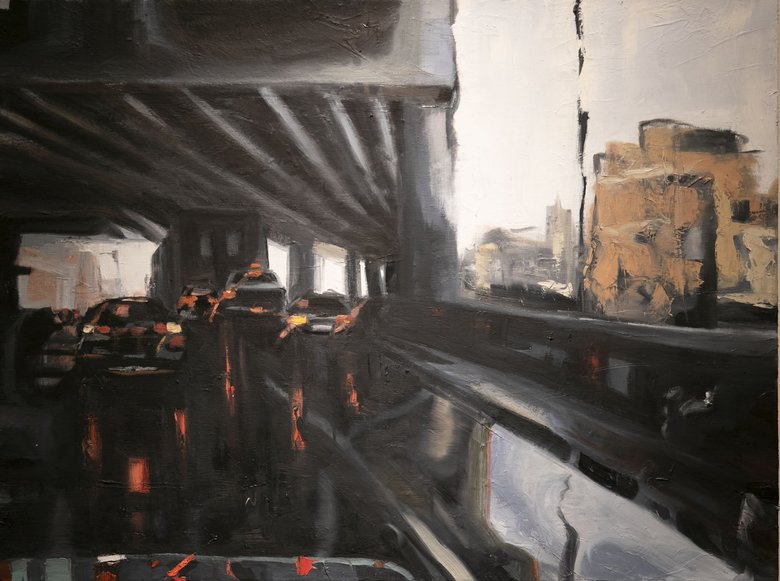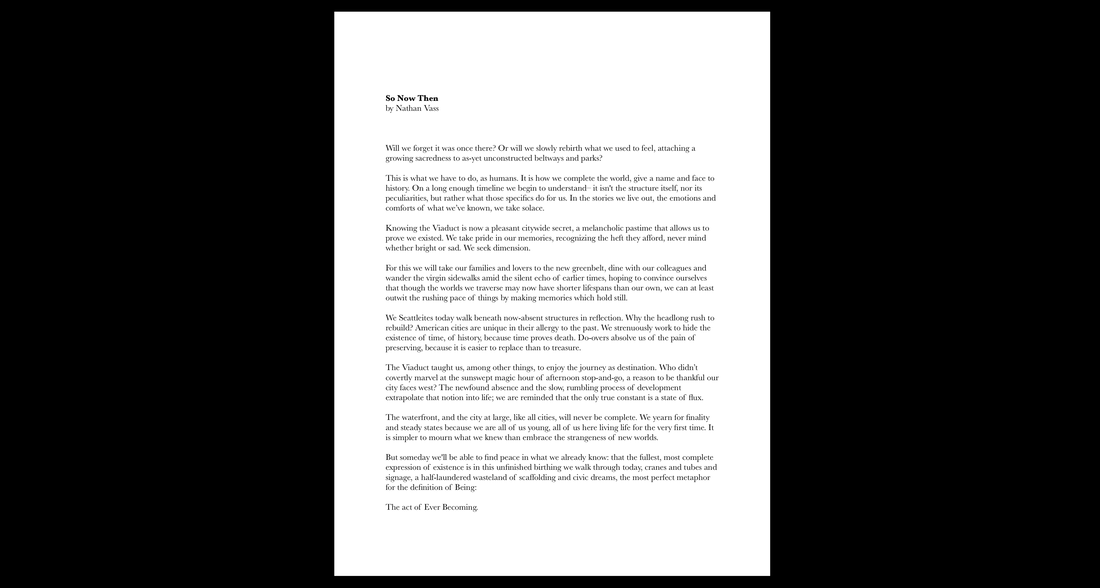|
These were going to be in-person events. Now you get to wear your jammies to them. Isn't that great?
As you may know, my book, The Lines That Make Us, was chosen as the sole title for the Summer Reading Program put on by Redmond Library, the City of Redmond, and Microsoft. We're finally closing in on the end of summer, where we cap things off with four author events; this is the first. On Saturday, 9/26 at 2 PM Pacific Time, I'll be giving a lecture called When We Become Islands– How Advancements in Communication Have Made Us Lonely People. It's all about what young people don't know they're missing out on when they go out of their way to avoid talking to people, and some pretty compelling new research on what happens as a result... as well as some surprisingly easy solutions for moving forward together. IMPORTANT: This is the same speech I gave in February at MOHAI (image from that event above). It was a smash over there, and I can't wait to give it again. If you were there, you'd be forgiven for sitting this one out, or else throwing it on intermittently under the occasional cat video. But if you missed it, now's your chance! Saturday, September 26, 2020 2:00PM – 4:00PM Register for the event (and more details) here! Info on the other 3 events here.
0 Comments
As you may know and detailed here, my book is the sole title for this year's Summer Reading Program as brought to you by the City of Redmond, Microsoft, and the Redmond Library. They've been interviewing me on various stories in my book, in videos which you can watch here. There's a lot of further info about the city's program with the book in that link as well, and the content on there is continually updated.
Thanks, Redmond, for reading and sharing. If you have questions or comments about my book, please ask them in the comments below! Otherwise, I'll see you for a series of exciting upcoming online events this September and October! Details here! "A touching story about grief and loss... does a fantastic job getting right to the issues of life, death, and legacy."
-Alan Ng, Film Threat (click here for full review) "Sophisticated... a very accomplished piece of filmmaking and storytelling." -Chris Buick, UK Film Review (click here for full review) "Supported by excellent writing, cinematography and an impeccable cast, Men I Trust is a beautiful homage to life and love itself." -Olivia Ballington, Indy Reviews (click here for full review) I blush, reader. It's not out of any desire to alter your estimation of me that I share these, but that in doing so these reviews might shine more light on the excellent work done by all the artists who contributed to the film. Every word of praise sent their way– to the actors, camera, sound, technicians, extras and more– is deserved. Bravo Eleanor, Marty, Meagan, Seth, Brian, Daniel, and all the rest. The text layout of the poster above is accurate– it really is a film not just by me but all of those names, who got up early, memorized lines, worked for less, and went the extra mile. Thanks also to the reviewers, particularly Ms. Ballington for her in-depth appraisal. Read/watch/learn more about Men I Trust at its official page, here. Stay tuned for more! Painting by Laura Hamje. Photograph by Nathan Vass. I was honored to be asked to write two pieces on Seattle's waterfront for Laura Hamje's art book, discussed by me here and available for purchase here (9/5 book launch details here!). Only one piece made it into the book, however, and in edited form at that; I wanted to share the original pieces with you, not to upstage the wonderfully curated book but to compliment it. As I know all too well, authors never get to squeeze everything they want into published books. Thank goodness for the internet. The first reads as an elegy of sorts, and articulating those pangs of longing was easy for me; the piece practically wrote itself. But I most appreciate being tasked with writing the second one, even if it never made it into the book. It was a test, in the sense of: dare yourself to see the positive in losing of past. Dare yourself to think on a broader scale, to understand time on a plane beyond the personal. This is a healing perspective, and a skill we could all benefit from honing, myself most of all. Life is not merely a series of ever-escalating losses, as is so tempting to think in our worst moments; but something calmer, deeper, more renewable. Read on. Eternity It is easy to forget that objects outlast loved ones. They live longer than people, and carry with them the bodied memories of a thousand ordinary days, the days when that person still wandered about the house, called you, whisper-chuckled in your ears. Objects stick around, long after your spouse, parent, whomever– has drifted out of your life, a casualty of death and time. You look at things differently now. Cheap chinaware, from when your family spoke another language. Your child's drawings. They comfort us, objects do, defying mortality and proving real our memories. It is a bizarre thing to outlive an object. To witness the destruction and sudden absence of this massive, city-defining edifice is to be unmoored. We are as children who have lost our ancient tree, the old church or schoolyard... Things seen against the sky, which fulfilled all our definitions for what is everlasting. This is what the Viaduct was for those of us who were there. With shadows and stone it reminded us of what used to be obvious, felt and known: Seattle was a frontier town, built from earth and industry and fire, by hard men and resilient women redolent with the grit-grime texture of a life you could actually touch. You felt their pioneer spirit when you drove on a structure you knew might collapse at any moment, negotiated its awkward merges or stumbled about in awe beneath its roaring and cavernous underbellies. For the price of bus fare, anyone and their aunt Martha could have the best view of both the Sound and the skyline at the drop of a hat. That will never be true again. There is a look in the eye of every Seattleite who knew the city pre-Amazon. We don't need to explain it to each other, and it's invisible to everyone else. We have outlived the objects that gave us an anchor in our own home. Do you know what that feels like? At the close of every long day, and the start of each fresh one, in the sweet halfway house between dreams and waking life, we forget what's happened and remember the Seattle that made Seattle, the concrete, evergreen, Japanese, two-story, lumberjack fisherman rail-tie Boeing that was Seattle. We see it as if it's still right outside, all connected by the great Viaduct, that monolith that defined us, an engineering marvel for which we were rightly proud, which we praised and loved to lament. For just a moment, the memory feels so possible. You can almost touch it, the past you learned too late to treasure. Another cloudy morning on the upper level, car windows down, feeling that stiff saltwater breeze blast you just the way you like it, enjoying the mighty din of freeway traffic, the only manmade sound that contains all of human life. We were there. So Now Then Will we forget it was once there? Or will we slowly rebirth what we used to feel, attaching a growing sacredness to as-yet unconstructed beltways and parks?
This is what we have to do, as humans. It is how we complete the world, give a name and face to history. On a long enough timeline we begin to understand– it isn't the structure itself, nor its peculiarities, but rather what those specifics do for us. In the stories we live out, the emotions and comforts of what we’ve known, we take solace. Knowing the Viaduct is now a pleasant citywide secret, a melancholic pastime that allows us to prove we existed. We take pride in our memories, recognizing the heft they afford, never mind whether bright or sad. We seek dimension. For this we will take our families and lovers to the new greenbelt, dine with our colleagues and wander the virgin sidewalks amid the silent echo of earlier times, hoping to convince ourselves that though the worlds we traverse may now have shorter lifespans than our own, we can at least outwit the rushing pace of things by making memories which hold still. We Seattleites today walk beneath now-absent structures in reflection. Why the headlong rush to rebuild? American cities are unique in their allergy to the past. We strenuously work to hide the existence of time, of history, because time proves death. Do-overs absolve us of the pain of preserving, because it is easier to replace than to treasure. The Viaduct taught us, among other things, to enjoy the journey as destination. Who didn’t covertly marvel at the sunswept magic hour of afternoon stop-and-go, a reason to be thankful our city faces west? The newfound absence and the slow, rumbling process of development extrapolate that notion into life; we are reminded that the only true constant is a state of flux. The waterfront, and the city at large, like all cities, will never be complete. We yearn for finality and steady states because we are all of us young, all of us here living life for the very first time. It is simpler to mourn what we knew than embrace the strangeness of new worlds. But someday we'll be able to find peace in what we already know: that the fullest, most complete expression of existence is in this unfinished birthing we walk through today, cranes and tubes and signage, a half-laundered wasteland of scaffolding and civic dreams, the most perfect metaphor for the definition of Being: The act of Ever Becoming. |
Nathan
Archives
July 2024
Categories |








 RSS Feed
RSS Feed
